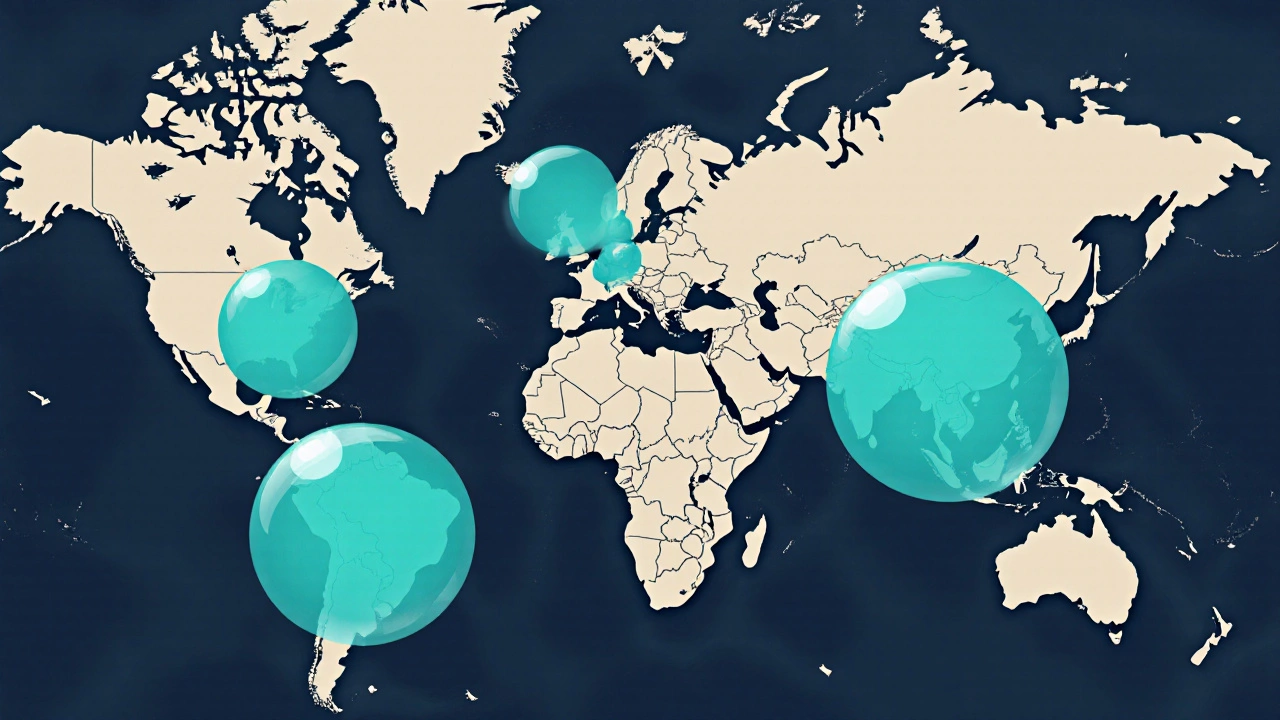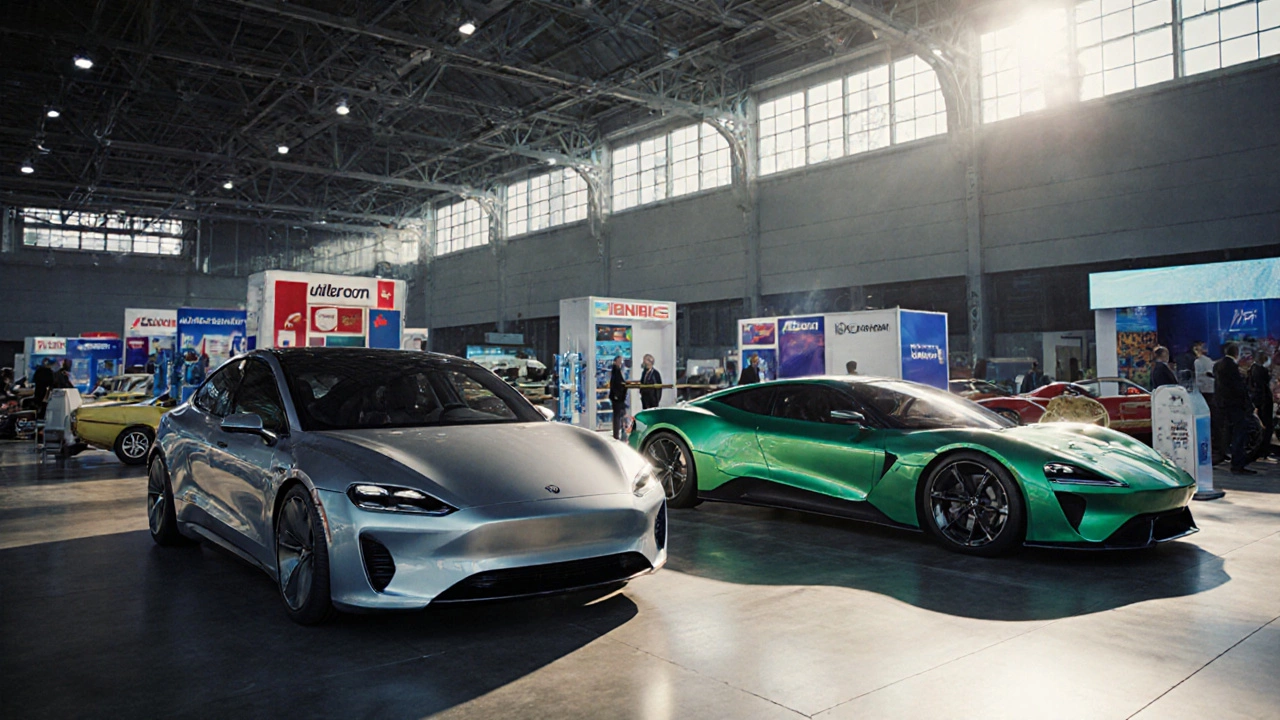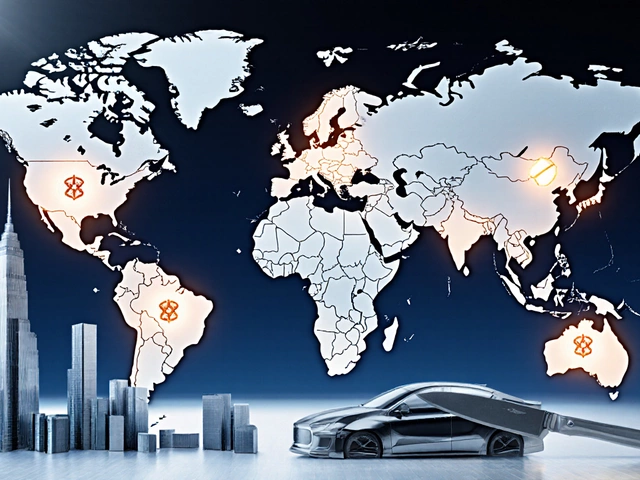Which Country Has the Most Car Brands? - Global Auto Brand Count 2025

Car Brand Count Finder
Search any country to see how many car brands it has, including active, specialty, and EV-only brands.
Key Takeaways
- The United States leads with over 150 distinct car brands when you count all historic, niche, and EV‑only marques.
- Japan and Germany follow closely, each boasting more than 100 active and legacy brands.
- China’s rapid EV surge added dozens of new brands, putting it in the top three for sheer count.
- India, despite a booming market, still has fewer than 30 recognizable marques.
- Counting methodology matters - we include defunct, specialty, and electric‑only brands to get a true picture.
When we talk about car brand is a name under which a vehicle is marketed and sold, often backed by a parent company or a state‑backed initiative, the question “which country made the most car brands?” can feel like a trivia game. But the answer tells you a lot about industrial policy, market size, and how quickly a nation can spin up new manufacturers. In 2025 the landscape has shifted dramatically because of electric‑vehicle (EV) startups, government incentives, and a wave of consolidation.
How We Count Car Brands
First, let’s clear up the methodology - it’s the secret sauce behind every ranking.
- Active versus historic: We include all brands that have produced at least one model in the past 15 years. That captures legacy names like Packard (still alive on paper) and new entrants like Polestar.
- Specialty and low‑volume marques: Coach‑built, performance‑only, and niche EV start‑ups count. Think Rimac or Aptera.
- Parent‑company vs. sub‑brand distinction: If a parent owns multiple distinct marques (e.g., Volkswagen Group with Audi, Skoda, Seat), each sub‑brand is a separate entry.
- Geographic attribution: A brand is credited to the country where its headquarters or primary manufacturing hub is located, not where it sells most cars.
This approach gives a broader picture than “top selling nations” and helps us spot policy‑driven brand proliferation.
Top Countries by Number of Car Brands (2025)
| Country | Number of Brands* | Notable Brands | Market Share (%) |
|---|---|---|---|
| United States | 158 | Ford, Chevrolet, Tesla, Rivian, Lucid, Cadillac, Hennessey | 17.2 |
| China | 146 | BYD, NIO, Geely, Xpeng, Li Auto, WM Motors, Hongqi | 33.8 |
| Japan | 112 | Toyota, Honda, Nissan, Subaru, Mazda, Lexus, Daihatsu | 15.4 |
| Germany | 104 | Volkswagen, BMW, Mercedes‑Benz, Audi, Porsche, Opel, Smart | 10.9 |
| South Korea | 78 | Hyundai, Kia, Genesis, SsangYong, Renault Samsung | 5.3 |
| Italy | 55 | Fiat, Ferrari, Lamborghini, Maserati, Alfa Romeo, Ducati (motor) | 3.1 |
| France | 48 | Renault, Peugeot, Citroën, DS, Alpine | 2.8 |
| India | 27 | Mahindra, Tata, Maruti Suzuki (subsidiary), Force Motors, Ashok Leyland (commercial) | 2.5 |
| United Kingdom | 22 | Jaguar, Land Rover, Bentley, Aston Martin, Mini, Rolls‑Royce | 2.0 |
*Numbers include active, boutique, and EV‑only marques counted as of December 2025.
Why the United States Leads
The U.S. tops the list not because it sells the most cars (that honor belongs to China), but because its industrial ecosystem nurtures a huge variety of brands.
- Vast funding landscape: Venture capital, corporate spin‑offs, and government R&D grants fuel dozens of EV start‑ups each year.
- Regulatory freedom: State‑level emissions standards allow manufacturers to experiment with niche powertrains without a single national barrier.
- Heritage diversification: Legacy automakers have launched sub‑brands (e.g., Ford Performance, Buick Electric) that count as separate entries.
- Aftermarket culture: Companies that specialize in performance upgrades (e.g., Hennessey, Saleen) are recognized as independent brands.
All these factors combine to push the brand count well above 150.

China’s Rapid Rise
China’s surge is driven by a government push for electric mobility. Since 2018, the Ministry of Industry and Information Technology ⟹ China has offered subsidies, tax breaks, and simplified licensing for new EV makers.
That policy cocktail birthed a wave of start‑ups: Rivian‑like NIO, luxury‑focused Zeekr, and budget WM Motors. Even traditional giants like Geely spun off multiple sub‑brands (Lynk & Co, Polestar, Zeekr). The result? A brand count that rivals the United States despite a shorter automotive history.
Japan and Germany: Quality Over Quantity
Both Japan and Germany have fewer brands than the U.S. and China, but their lists are packed with globally dominant names.
Japan’s ecosystem leans on a strong supplier network (e.g., Denso, Aisin) and a culture of continuous improvement (kaizen). That environment lets even small marques like Hino (commercial trucks) survive alongside giants.
Germany’s Germany benefits from a high‑tech engineering heritage and a federal system that supports regional specialty manufacturers (e.g., Smart in Baden‑Württemberg). The country’s brand count stays high because each major group maintains distinct identities.
Emerging Players: South Korea, Italy, and France
South Korea punches above its weight with 78 brands, many of which focus on electric and hydrogen technology (Hyundai Mobility, Kia EV). Italy’s portfolio is heavily skewed toward performance and luxury, while France balances mass‑market (Renault) with boutique electric concepts (DS Performance).

India’s Situation
India’s automotive market is massive-over 3 million units sold annually-but its brand diversity lags. The primary reasons:
- Regulatory hurdles: Safety and emission norms have historically been lenient, discouraging high‑cost brand launches.
- Capital constraints: Setting up a full‑scale plant still requires billions of rupees, limiting new entrants.
- Focus on localization: Companies like Tata and Mahindra prioritize domestic models over creating multiple sub‑brands.
However, the rise of EV‑only firms such as Ola Electric and Euler Motors could quickly add to the count in the next five years.
Practical Checklist: How to Evaluate a Country’s Car‑Brand Landscape
- Check the registration date of each brand - newer than 2010 often indicates EV focus.
- Identify the parent company relationship - a single conglomerate can inflate counts.
- Look at production capacity - low‑volume boutique makers may only produce a handful of units per year.
- Consider government incentives - countries with strong EV subsidies usually see a rapid rise in brand numbers.
- Assess global export share - a high export ratio often signals a brand’s maturity.
What This Means for Investors and Consumers
If you’re an investor, the sheer number of brands can be a double‑edged sword. A high count often signals an open, innovative market (good for early‑stage EV funds), but it also means many brands will fail - historically about 30 % of new entrants disappear within five years.
For consumers, a larger brand pool translates to more niche options: specialized off‑roaders, ultra‑luxury electric sedans, or affordable city EVs. However, spare‑part availability and resale value can suffer for ultra‑small marques.
Future Outlook: Who Will Lead in 2030?
Predicting the next leader is tricky, but three trends are clear:
- EV‑only ecosystems: Countries that keep subsidizing battery‑tech start‑ups (China, USA, South Korea) will keep brand counts high.
- Regulatory convergence: Stricter EU safety standards could push smaller European brands to merge, lowering counts.
- Cross‑border collaborations: Joint ventures (e.g., a German‑Chinese EV effort) could create hybrid brands that blur national attribution.
By 2030, we might see a “top‑three” of United States, China, and a coalition of Japan‑Germany‑South Korea holding the most distinct marques.
Which country currently has the most car brands?
As of 2025, the United States leads with about 158 distinct car brands, followed closely by China with 146.
Do boutique manufacturers count as separate brands?
Yes. Our count includes low‑volume specialty makers, performance outfitters, and EV‑only start‑ups, as long as they have produced a model in the past 15 years.
Why does China have so many brands despite a shorter automotive history?
Government incentives, subsidies for EV development, and a relaxed licensing regime have spawned dozens of new manufacturers in the last decade.
Will India catch up in the next five years?
India’s brand count is expected to rise to around 45 by 2030, driven mainly by EV start‑ups like Ola Electric and increasing government support for local manufacturing.
How reliable is the brand count methodology?
We use a transparent set of rules: active within 15 years, distinct branding, and country of headquarters. While no method is perfect, it balances historic depth with modern market realities.





